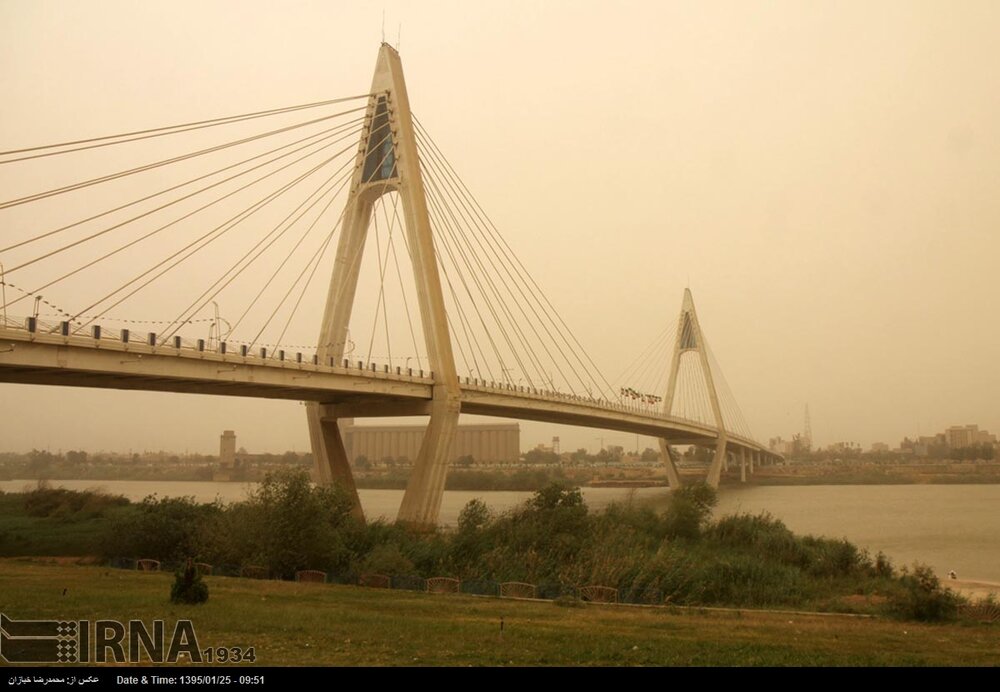Action plans to tackle sand and dust storms to be completed by yearend

TEHRAN — There are some 20 million hectares of sand and dust storm hotspots in the country and some are in a critical condition, so the action plans to fight the storms will be completed by the yearend (March 19, 2020), deputy environment chief Masoud Tajrishi has said.
Internal sand and dust storm hotspots are already identified and action plans to battle the predicament in each province will be prepared by the end of the current year, IRNA news agency quoted Tajrishi as saying on Friday.
In order to draw up the plans Iran’s Department of Environment is cooperating with Shahid Beheshti University, University of Tehran and Azad University, he added.
“Action plan to fight sand and dust storms in southwestern Khuzestan province is almost prepared and we are now preparing an action plan for the southeastern province of Sistan-Baluchestan,” he highlighted.
Moreover, action plans for dried up wetlands which have turned into hotspots for sand and dust storms are prepared and measures are being taken to fight the phenomenon, he stated.
Tajrishi went on to say that due to the severity of the condition in Sistan-Baluchestan Islamic Revolution Leader Ayatollah Seyyed Ali Khamenei has allowed withdrawing 115 million euros from the National Development Fund to fight sand and dust storms in the region.
Commenting on external sand and dust storm hotspots Tajrishi explained that the Department of Environment as well as Iran’s Meteorological Organization and three research centers have agreed on studying and identifying these hotspots.
In collaboration with United Nations Development Programme (UNDP) we are planning on gathering regional countries to come up with strategies to combat sand and dust storms in other countries as well, he noted.
He also said that raising international funds is on agenda to address sand and dust storms rising from external hotspots.
According to the World Metrological Organization Sand and dust storms usually occur when strong winds lift large amounts of sand and dust from bare, dry soils into the atmosphere. Over the last decade, scientists have come to realize the impacts on climate, human health, the environment and many socio-economic sectors.
Mitigating the effects of sand and dust storms
According to EcoMENA sand and dust storms cause significant negative impacts on society, economy and environment at local, regional and global scale. There are three key factors responsible for the generation of sand and dust storms – strong wind, lack of vegetation and absence of rainfall. The environmental and health hazards of such storms cannot be reduced permanently, however its impact can be reduced by taking appropriate measures.
As the dust cloud rises, it reduces the horizontal visibility which can impact human life in many ways. The fine suspended particles also contain contaminants, bacteria, pollens, which cause negative health impacts such as allergies and respiratory diseases. Dust also carries air borne pollutants such as toxins, heavy metals, salt, sulphur, pesticides, etc. which cause significant health impacts when people inhale the contaminated dust. Dust can corrode buildings and other built infrastructure as it contains high level of salts.
The effects of sand and dust storms can be reduced by using a number of health & safety measures and environmental control strategies. Large-scale sand and dust storms are generally natural phenomena and it may not be always practicable to prevent it happening. However, control measures can be taken to reduce its impacts. Localized small-scale dust emission due to human induced activities can be reduced by using temporary mechanical methods such as concrete barrier, mulching, tree buffer etc.
Taking appropriate control of dust raising factors such as increasing the vegetation cover where possible can help in stabilization of the soil, sand dunes and form windbreaks. Additionally use of native plants and trees as buffer can reduce wind velocity and sand drifts at the same increase the soil moisture. Designing buildings appropriately and conduct air infiltration testing during building commissioning can also help the adverse effects of sand and dust storm.
MQ/
Leave a Comment